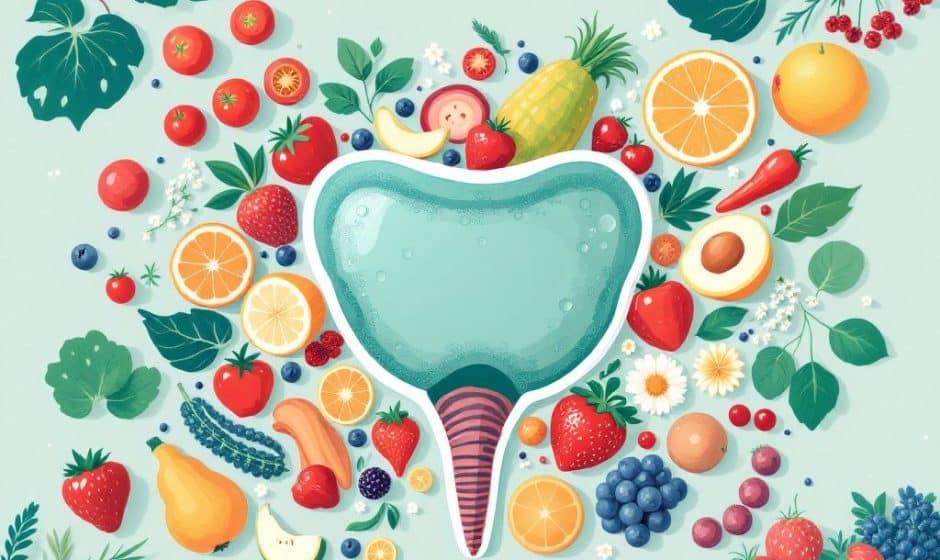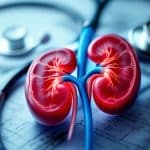Hey there! Have you ever paused to consider how your bladder is doing these days? Yeah, I know—it’s not exactly the type of organ talk that comes up over brunch. But trust me, giving a little thought to bladder health can make a world of difference in your life. So grab a comfy seat, a mug of something warm, and let’s chat about how you can keep your bladder not just working, but thriving, alongside keeping an eye on one unexpected friend—or foe: hormone regulation.
Why Bladder Health Matters
Before we dive into the ins and outs of alth should be on and its impact, let’s have a quick chat about why bladder health should be on your radar. This pear-shaped organ is a small but mighty player in the bodily arena. It doesn’t just chill out quietly; it’s busy storing and eventually releasing urine—a task that involves intricate cooperation between muscles and nerves. When everything works like a well-oiled machine, you probably don’t give it much thought. But when things go sideways, your bladder will definitely make its presence known.
Consequences of Ignoring Bladder Signals
Imagine you’re on a road trip, and your car suddenly flashes a warning light. Ignoring it could lead to, well, less than ideal situations. The same goes for your bladder, which might give off signals that all’s not quite right. Ignoring symptoms like frequent urination, incontinence, or discomfort can lead to bigger road bumps down the line. So, it’s important to give it the attention it deserves.
Now, no one wants to turn into a hypochondriac, rushing to the doctor at the slightest signal, but staying informed and aware allows you to truly understand what ‘normal’ feels like. Remember, catching potential issues early can save a lot of hassle (and discomfort).
Hormone Regulation: The Unsung Hero
Now here’s where it gets interesting—hormones play a pivotal role in bladder health, and they often go unnoticed until something’s awry. Hormones are like conductors of an orchestra, ensuring different systems follow the same rhythm.
The Relationship Between Hormones and Bladder

Think of your hormones as part of the backstage crew for your bladder’s symphony. When your hormone levels are fluctuating—whether due to menopause, stress, or just plain old life (yes, blame it all), your bladder can feel out of tune. Estrogen, specifically, helps keep your urethra and bladder healthy. Lower estrogen levels can result in a decrease in the strength of your pelvic muscles, sometimes leading to incontinence. Yeah, it’s annoying, but we’ve got ways to handle it.
How to Keep Your Bladder Happy
Alright, with that understanding in mind, let’s walk through some of the best ways you can maintain robust bladder health along with balanced hormone regulation. This isn’t rocket science, but consistency is key.
Hydration: The Most Underestimated Hero
It sounds almost too simple, doesn’t it? But believe me, drinking enough water is crucial. It helps in diluting your urine, minimizing bladder irritation. The trick? Spread out your hydration—ascending a mountain of water in the morning will just drown you in bathroom trips.
- Pro Tip: Aim for a steady intake throughout the day with sips of water, herbal teas, or clear broths.
Eating for Your Bladder and Hormones
Food choices can have a surprisingly big impact on both bladder health and hormone regulation. Foods rich in phytoestrogens—like flax seeds, soy, and nuts—can support your body’s estrogen levels. Balance that with a diet full of fresh fruits, veggies, lean proteins, and whole grains.
Activating your body’s bell music requires a diet that encompasses both health-conscious choices and understanding what might be throwing some unnecessary bombs. Here’s a quick dietary adjustment cheat sheet:
Foods To Favor:
- Cranberries and Blueberries: Known for their ability to enhance urinary tract health.
- Watermelon and Pineapple: Serve as amazing natural diuretics and keep infections at bay.
- Leafy Green Vegetables: Rich in calcium and magnesium, which are critical for muscular health.
Foods To Keep In Check:

- Spicy Foods: Can cause bladder irritation.
- Citrus Fruits: May carry more acid than your bladder prefers.
- Caffeine: Ah yes, it might be your ride-or-die, but caffeine can over-stimulate the bladder.
Strengthening the Pelvic Floor
Building muscle is not reserved for bodybuilders, believe it or not! Strengthening your pelvic floor muscles can be super beneficial. These muscles support your bladder, uterus, and bowel. Here’s what you could try:
- Kegel Exercises: These can be done anytime, anywhere. Contract your pelvic floor muscles, hold for a few seconds, then release. Aim for three sets of 10 a day and you’ll be well on your way.
- Yoga poses: Specific postures like the Bridge pose or Happy Baby are great at enhancing pelvic floor strength. Plus, yoga is aces for stress relief—a win-win!
Destressing Your Life
Easier said than done, right? But if you manage to tame the stress beast, you’ll see improvements not just in your bladder health, but overall well-being. Stress can trigger unwanted changes in your hormonal balance, which can indirectly wreck your bladder’s happy rhythm.
- Meditation and Mindfulness: Just a few minutes a day can bring about calmness that your bladder will thank you for.
- Hobbies and Enjoyment: Lose yourself in a favorite hobby to passively train your bladder away from stress-induced changes.
Consistency with Bathroom Habits

A bladder health balance isn’t just about what you eat and drink—it’s also closely tied to your bathroom habits. Try establishing a relaxing routine that doesn’t keep you running every 30 minutes, but also doesn’t ignore nature’s calls till the absolute last second.
- Timed Trips: Emptying your bladder at regular intervals (every 2-4 hours in the day is typical unless sleeping) can train stability.
- Fully Emptying: Take a little extra time to ensure you’ve emptied entirely to prevent infections. It’s like pouring the leftover bit out of your coffee; you don’t want to forget those last drops.
Tracking Your Progress
Any improvement steps can be fun when you can measure your progress. Keeping a journal, perhaps, noting daily intake, experiences with different foods, or shifts in stress levels and symptoms—it’s like making your personal health detective story.
*Jot down* those observations such as incidences of urgency, discomfort, etc., and how they correlate to what you’ve done differently. Seeing patterns can be enormously helpful!
When To Seek Help
Okay, here’s a real essential point—if you’re taking these steps and not noticing any improvements or if things seem to be getting worse, don’t rely solely on convo tips. Reach out to a healthcare professional. It’s always better to get checked by someone who knows their stuff inside and out.
Summing It All Up
We’ve had quite a vibrant chat about these crucial bodily aspects—improving bladder health doesn’t necessarily require a massive lifestyle overhaul, but rather being aware of intentionally incorporating routine, consistency, and some hormone-savvy maneuvers. It doesn’t mean you can’t enjoy life’s pleasures (occasional chocolate and a glass of wine, anybody?) but fosters a dialogue with yourself on what’s best for you and your bladder.
Balance is the keyword. Trust in this low-pressure approach and give these guidelines a genuine shake. Your bladder (and your sense of overall well-being) will tip its hat in gratitude.
That’s a wrap! Hope you uncover the perfect balance that works for your body—remember, it’s a personalized health journey. Let’s raise our glass of water to happy, healthy bladder living. Cheers!
Frequently Asked Questions
What is hormone regulation and how does it affect the body?
Hormone regulation involves the balance and proper functioning of hormones, which are chemical messengers produced by glands in the endocrine system. These hormones influence various bodily functions, including metabolism, growth, and reproductive processes. An imbalance can lead to symptoms such as irritability, fatigue, mood swings, and physical changes like skin dryness and weight gain[3][5].
What causes hormonal imbalances, particularly during menopause?
Hormonal imbalances during menopause are caused by the natural decline in hormone levels, specifically oestradiol, progesterone, and sometimes testosterone. This decline occurs during perimenopause and menopause, leading to symptoms such as hot flashes, mood swings, and vaginal dryness. Other factors like hysterectomy, autoimmune diseases, and tumors can also cause hormonal imbalances[1][3][5].
How does hormone replacement therapy (HRT) help with hormone regulation?
HRT works by replacing or topping up the missing hormones in the body, particularly during menopause. It can include oestradiol, progesterone, and sometimes testosterone, administered through various methods like patches, gels, or pills. HRT helps alleviate symptoms such as hot flashes, mood swings, and vaginal dryness, and can also provide long-term health benefits like reducing the risk of osteoporosis and heart disease[1][3].
What are the common side effects of hormone replacement therapy (HRT)?
The common side effects of HRT include bleeding, breast tenderness, bloating, and mood changes. These side effects are often temporary and may settle within a few months. If the side effects persist, adjustments to the dose or type of HRT may be necessary[1].
References



